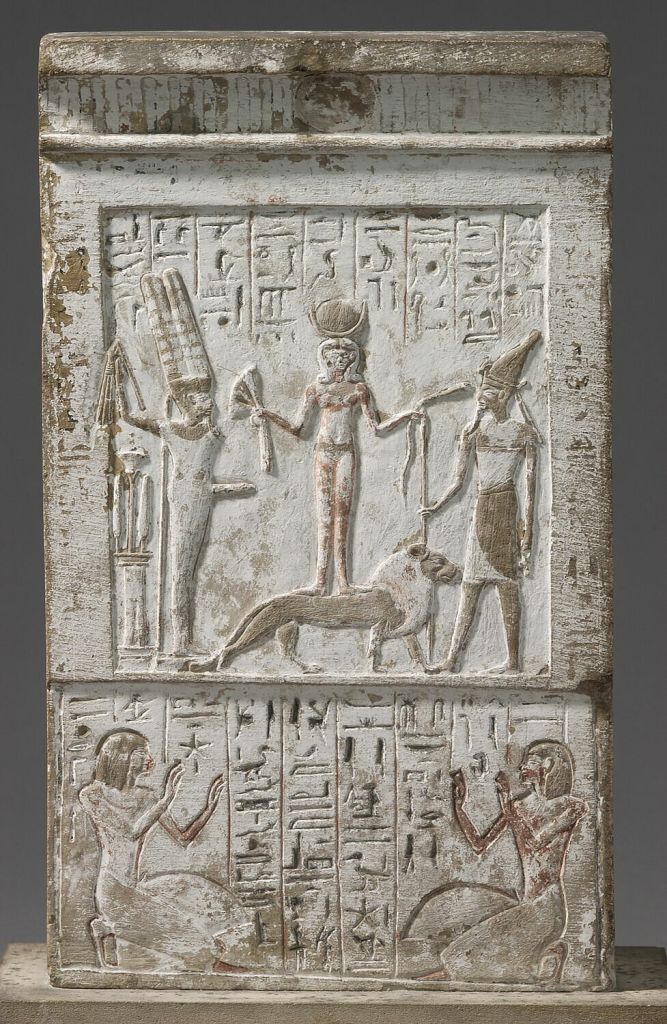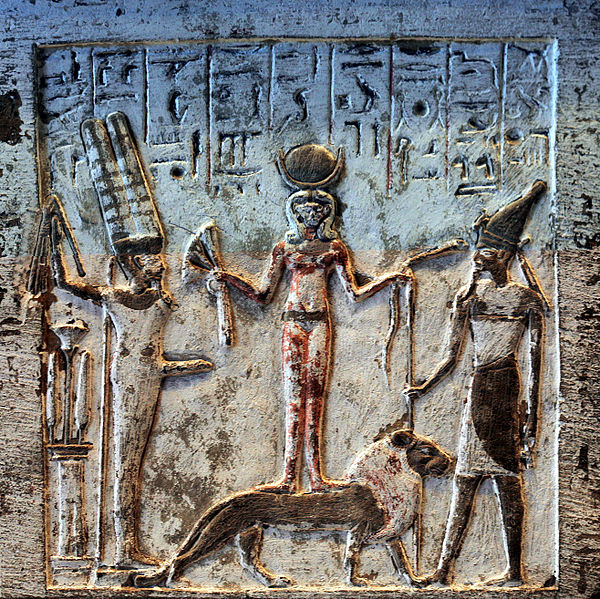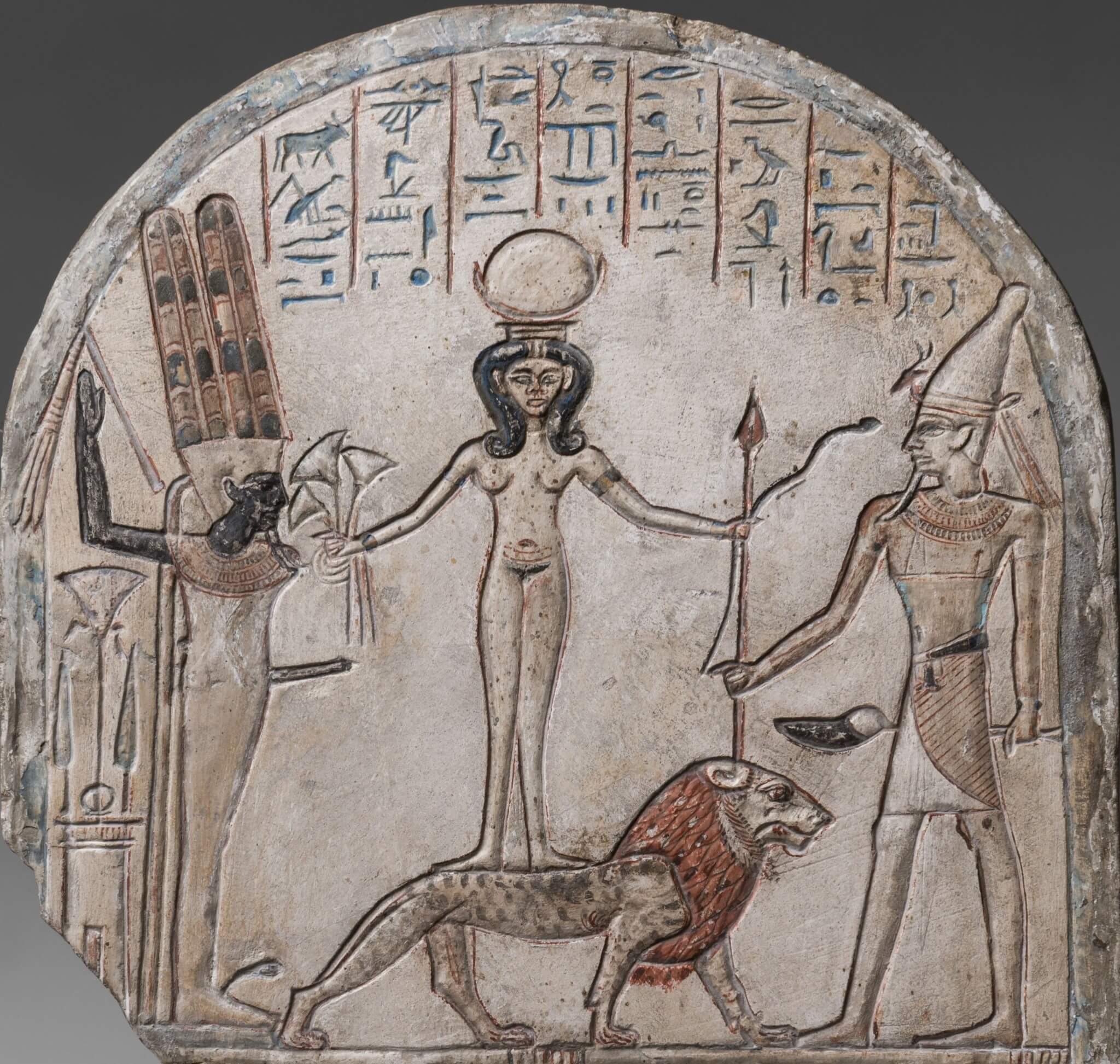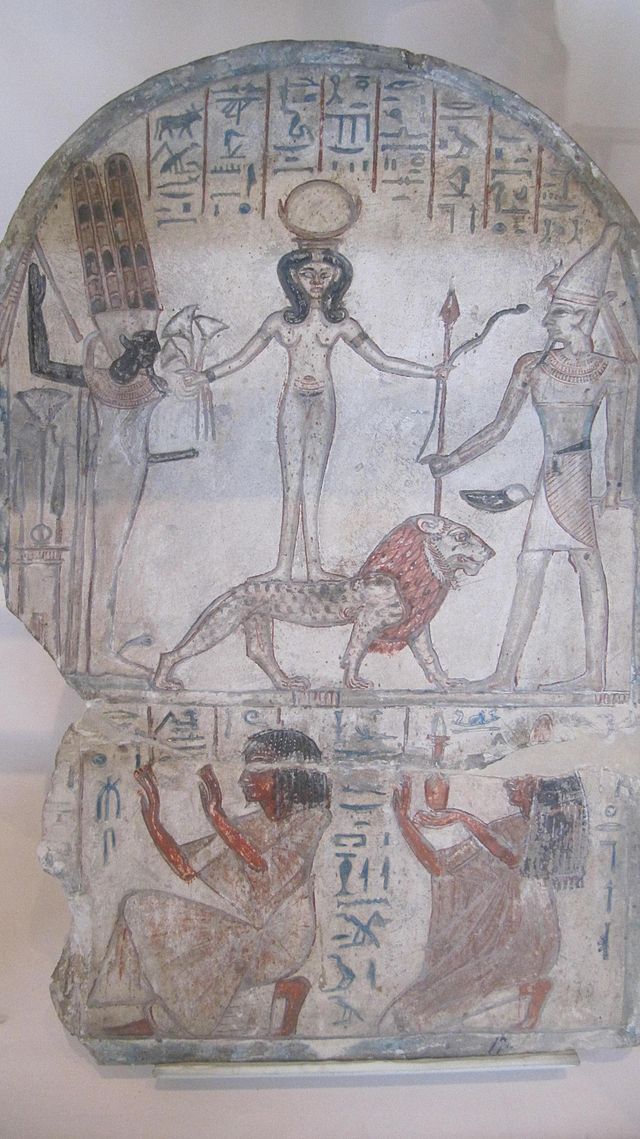The Stele of Qetesh is a remarkable artifact from ancient Egypt, showcasing the deep religious and cultural exchanges between Egypt and the Canaanite world. Dating back to the New Kingdom, this limestone stele is a fusion of Egyptian and Canaanite artistic and religious traditions.
Description of the Stele
The stele is a rectangular limestone monument featuring inscriptions and reliefs on both sides, with a cavetto cornice at the top, a typical architectural element in Egyptian steles.
The central figure on the relief is Qetesh, depicted as a frontal nude woman—a rare representation in Egyptian art, where goddesses were usually clothed. She stands gracefully on a lion, symbolizing power and control over nature. Her head is adorned with a Hathoric wig and a lunar disk, reinforcing her celestial and divine attributes. In her hands, she holds a snake and a lotus flower, both representing fertility, renewal, and divine influence.

On either side of Qetesh stand two deities:
- Min (left): The Egyptian god of fertility, depicted with his characteristic erect phallus, symbolizing creation and agricultural abundance.
- Resheph (right): A Canaanite god of war and protection, commonly associated with plague and military strength. His presence highlights the integration of foreign deities into Egyptian religious thought.
Above them, two kneeling worshippers are depicted in the upper register, dressed in loincloths and performing gestures of reverence. Their presence emphasizes Qetesh’s high status within this religious framework.
Who Was Qetesh?
A Goddess of Love, Fertility, and War
Qetesh was a foreign deity of Canaanite origin, later absorbed into the Egyptian pantheon during the New Kingdom. She was worshipped primarily as a goddess of love, sensuality, fertility, and protection, but also possessed elements of war, making her comparable to Ishtar (Mesopotamian) and Astarte (Canaanite-Phoenician)
 .
.
Her Role in Egyptian Religion
Qetesh was often linked with the Egyptian goddess Hathor, who also embodied love, beauty, and motherhood. However, Qetesh’s nude depiction and her connection to war and foreign deities made her a distinctive figure in Egyptian spirituality. Unlike many Egyptian goddesses, she was depicted standing on a lion, symbolizing her dominance over nature and chaos.
Her worship likely arose due to Egypt’s military campaigns and trade relations with the Levant, allowing religious syncretism to flourish. Temples and religious inscriptions referencing Qetesh have been found in Egypt and the Levant, suggesting a widespread cult following.

The Cultural and Artistic Significance of the Stele
Religious Syncretism in Ancient Egypt
The Stele of Qetesh is a fascinating example of Egyptian religious adaptability. While Egyptian gods were deeply ingrained in the culture, foreign deities were not rejected—instead, they were incorporated into the Egyptian belief system. This reflects Egypt’s role as a hub of cultural exchange, especially during the New Kingdom when Egyptian influence expanded into the Levant.
Artistic Uniqueness
The nudity of Qetesh is a defining feature that sets this stele apart. In traditional Egyptian art, female deities were typically clothed, emphasizing modesty and divine order. However, Qetesh’s foreign origins likely influenced her representation, blending Egyptian, Canaanite, and Mesopotamian artistic styles.
Symbolism of the Lion
Lions in Egyptian and Near Eastern cultures often symbolized power, kingship, and divine authority. By standing atop a lion, Qetesh embodies control over both nature and chaos, reinforcing her divine and protective role.
Conclusion: A Testament to Cultural Exchange
The Stele of Qetesh is more than just an artifact—it is a testament to the religious and artistic fusion between Egypt and its neighbors. Through its iconography, inscriptions, and divine figures, the stele provides insight into how Egypt adopted and adapted foreign deities, creating a richly diverse spiritual landscape.
This stele stands as a remarkable piece of history, reflecting the fluidity of ancient belief systems and the profound impact of cultural interaction in the ancient world.


